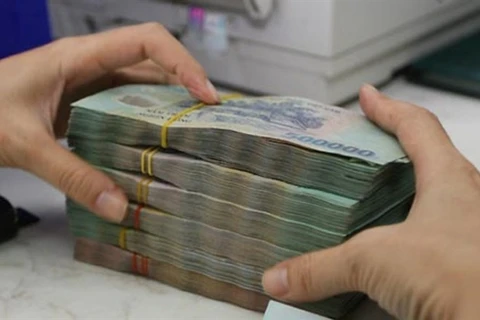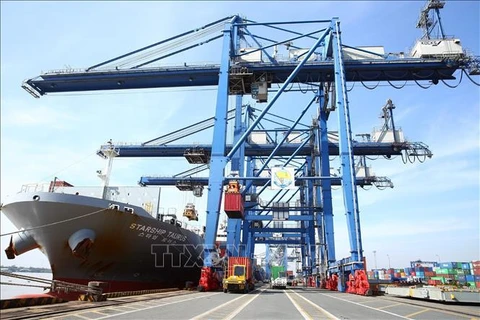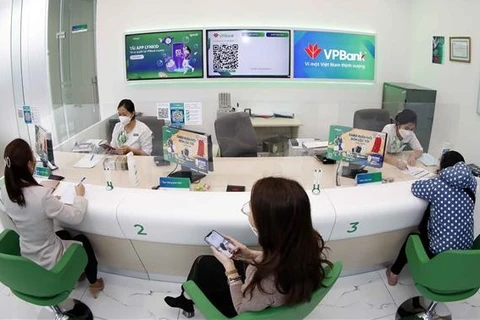 A customer at an ABBank branch. The SBV said the extension of the credit growth quota will be implemented at an appropriate time and the adjustment will depend on the financial health of each bank. (Photo: ABBank)
A customer at an ABBank branch. The SBV said the extension of the credit growth quota will be implemented at an appropriate time and the adjustment will depend on the financial health of each bank. (Photo: ABBank) As demands for bank loans have increased rapidly this year after the pandemic has been controlled, banks have already used up most of their assigned quota this year. The banks have therefore proposed the State Bank of Vietnam (SBV) to appropriately expand their credit growth quota to continually lend to customers.
Under the current regulations, the SBV sets credit growth limits for each commercial bank at the beginning of the year depending on the bank’s health, including capital adequacy ratio, financial strength, risk governance and operational status. This was done to control credit growth of the entire banking system and to ensure money supply and inflation control as targeted by the Government.
Nguyen The Minh, head of Yuanta Vietnam Securities Company’s individual customer analysis division, said without capital injection, firms cannot recover, which will cause rising bad debts. Therefore, banks, which have good asset quality, healthy finance and good capital buffers, should be given priority to allocate a higher credit growth quota.
The SBV has also said the extension of the credit growth quota will be implemented at an appropriate time and the adjustment will depend on the financial health of each bank.
According to the SBV’s deputy governor Dao Minh Tu, from the beginning of the year when setting the credit growth target at 14% in 2022, the SBV said it could flexibly adjust the target depending on the actual situation.
As banks said they have all used up their credit growth quota and cannot accelerate lending, Tu said the current situation is also an opportunity for banks to restructure their credit sources, noting the SBV’s goal is to direct capital into priority areas and strictly control credit to risky areas.
After a period of overheating growth which caused interest rates and inflation to accelerate in Vietnam, the SBV decided to control the credit growth ceiling at commercial banks in 2011.
Dr Ho Quoc Tuan, a lecturer at the UK’s University of Bristol, said very few countries in the world still use a credit growth granting tool like Vietnam.
According to Tuan, removing the credit limit is necessary, but not immediately, and should be placed on a roadmap. For instance, the SBV announces within five years it will remove the credit limit. During these five years, the SBV will tell commercial banks how to do a stress test and solve the bank's weaknesses, and deal with weak banks as well, with regulations on checking data and responsibilities. If there is no specific schedule set, no one will do it.
Instead of controlling the credit growth ceiling, the SBV should control credit growth through capital standards according to Basel, combined with modern banking management tools such as periodic checks. This still creates a credit limit for banks, but on a more quantitative, objective and transparent basis, Tuan said.
Dr Can Van Luc, member of the National Financial and Monetary Policy Advisory Council, said the SBV needs to remove the mechanism of granting credit room and managing credit growth through the capital adequacy ratio (CAR) of banks.
This credit limit granting mechanism should only be a temporary solution for the next one or two years, Luc said./.
VNA
























